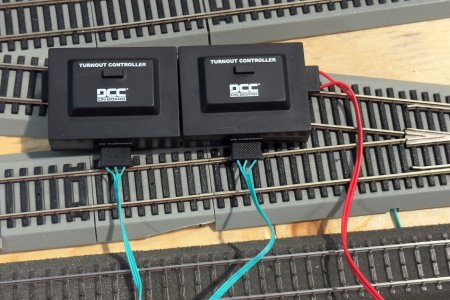Byrna55
Member
Hi,
I have four Bachmann no. 5 turnouts on an EZ-track layout (2-rail DC current), which each have DCC controller boxes. However, if I want to run this Bachmann system on an ESU DCC Command Center, I have no way of connecting these turnouts' power inputs to the ESU. Can I simply connect the power portion only of the DCC boxes to a separate DC powerpack but still use the ESU to operate the DCC controllers (to operate the turnouts)? Bachmann has red wires for power and green for data DCC connections. So the red will go to a DC powerpack (non-DCC) from the power output of the DCC boxes, and the green will still be connected to the turnout output of the DCC boxes.
I think this is possible, but I wanted to be sure.
I have four Bachmann no. 5 turnouts on an EZ-track layout (2-rail DC current), which each have DCC controller boxes. However, if I want to run this Bachmann system on an ESU DCC Command Center, I have no way of connecting these turnouts' power inputs to the ESU. Can I simply connect the power portion only of the DCC boxes to a separate DC powerpack but still use the ESU to operate the DCC controllers (to operate the turnouts)? Bachmann has red wires for power and green for data DCC connections. So the red will go to a DC powerpack (non-DCC) from the power output of the DCC boxes, and the green will still be connected to the turnout output of the DCC boxes.
I think this is possible, but I wanted to be sure.



